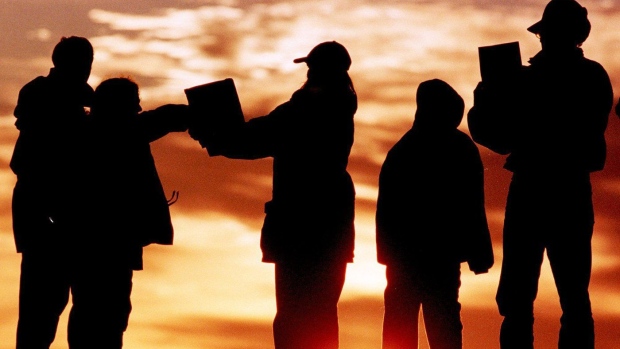Sonya Pusic, Canadian Press
Published on Friday, April 5, 2024 at 6:20 PM EDT
Last updated on Friday, April 5, 2024 6:20pm EDT
TORONTO – If you weren’t able to secure your eclipse glasses ahead of the biggest celestial event in years, don’t worry.
There are other ways to safely observe Monday’s solar eclipse, albeit indirectly.
Millions of people across North America, including eastern Canada and parts of the Atlantic coast, will experience several minutes of darkness during the day as the moon passes in front of the sun.
One easy way to observe this phenomenon is with a pinhole camera (more accurately called a projector). This camera can be made with things most people already have at home.
If you’re really short on time, a piece of paper and a thumbtack can go a long way, says Elaina Hyde, director of the Alan I. Carswell Observatory at York University in Toronto.
“Pinhole cameras are one of the oldest camera technologies,” she said.
A basic pinhole projector can be made by pushing a pin through paper or cardboard to make a small hole. If you take the paper outside and cast a shadow on the ground, some of the light that passes through the hole will project a “tiny image of the sun,” allowing you to safely track the eclipse, Hyde said.
“And you can use this with just about anything you have around the house. You can use heavy-duty construction board. You can also use paper.”
Another option is to use common kitchen utensils, she said.
“If you have a pasta strainer with circular holes, you can take it outside and cast a pasta strainer shadow on the ground,” Hyde says. “If you look at the shadow of a pasta strainer, all those holes are actually little statues of the sun.”
If you want to put in a little more effort and involve your kids in a fun activity, you can make a pinhole camera out of a cereal box, shoe box, or any other cardboard box that’s easy to reach.
For this project, you will need white paper, scissors, aluminum foil, pins, and tape.
Following instructions from NASA and the Canadian Space Agency, cover one of the insides of the box with white paper and cut it to size. This is what displays the eclipse projection.
Drill two square or rectangular holes on the opposite side of the box, one on the left and one on the right. The holes should be at least 10 centimeters apart. One is for viewing the interior, and the other is modified to project the eclipse onto the paper inside.
Next, cover one of the holes with aluminum foil, secure with tape, and poke a small hole in the foil with a pin. Make sure the box is tightly sealed.
During the eclipse, turn your back to the sun and look through the uncovered hole in the box so that as the eclipse progresses, the light enters the pinhole and the shape of the sun is projected onto the white paper inside the box. position.
Hyde emphasized the importance of never looking directly at the sun without proper eye protection during a solar eclipse. An ISO standard solar filter is required.
“Don’t use welding glasses. Don’t use regular sunglasses. Don’t layer regular sunglasses,” she said.
“Anything you’re thinking of doing DIY[to view the eclipse]has to be indirect. There’s no way to safely DIY safe solar glasses.”
This report by The Canadian Press was first published April 5, 2024.

